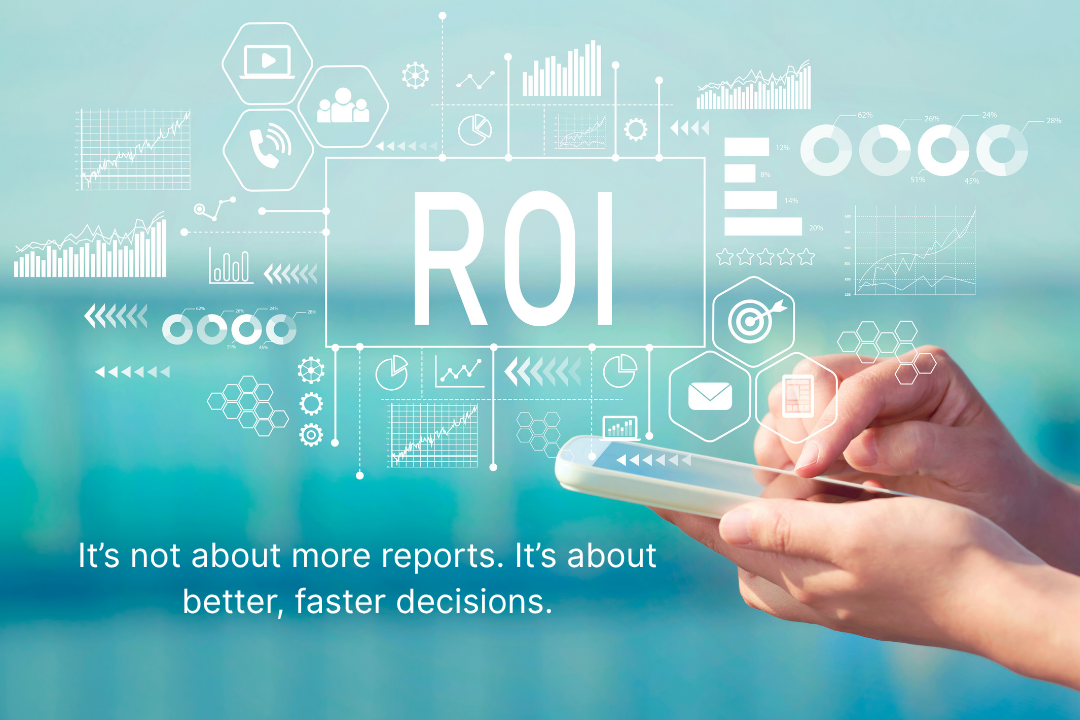[ Blog ]How Do You Calculate the ROI of Being Data Driven?
Cementing Profitability: Smarter Business with Performance Management
A Blog Series by Ramy Sedra
“Data-driven” has become one of the most overused buzzwords in business. But for ready-mix producers, it’s not about trend-chasing—it’s about operational survival and margin growth.
The real question is: What’s the business case?
What is the return on investment (ROI) of transforming from a reactive, siloed operation to one that is driven by insights, automation, and real-time decision-making?
Let’s break that down.

What Does Being Data Driven Actually Mean?
In the ready-mix concrete industry, being data driven means:- Making decisions based on facts and patterns, not gut feel
- Connecting financial, operational, and customer data into a single version of the truth
- Using AI to surface inefficiencies, risks, and opportunities in real time
- Enabling every team—from plant operators to executives—to act with clarity and confidence
Where Does the ROI Come From?
Let’s look at key value drivers that generate tangible ROI for data-driven producers:- Margin Recovery
By identifying margin leakage—through cost-to-serve analysis, pricing misalignment, and job-level performance—producers can recover 1–3% of EBITDA, according to benchmarks from Bain & Company.
- Operational Efficiency
AI-enabled dispatching, batching, and maintenance optimization can reduce waste and downtime by up to 20% in industrial environments, per McKinsey’s digital manufacturing report.
Source: McKinsey - The Smart Factory: A Future of Manufacturing Excellence - Customer Profitability Management
Understanding which customers are actually profitable (not just high-volume) allows producers to renegotiate contracts, reallocate resources, and prioritize high-margin segments. - Decision Velocity
Data-driven organizations are 5x more likely to make decisions faster than peers, per PwC. In a business where timing impacts everything—from delivery to production to pricing—this agility drives both top- and bottom-line results.
Source: PwC - Data-driven decision making - Labor Leverage
With experienced talent retiring and newer staff onboarding, data-driven systems help less experienced employees make expert-level decisions faster. This closes the productivity gap left by workforce turnover.
Putting Numbers to It: A Sample Scenario
Let’s say a mid-size producer pours 500,000 cubic meters annually, with average gross margins of 15%.If AI-enabled BPM tools can:
- Recover 1% of leaked margin → +$750,000/year
- Improve plant productivity by 10% → more throughput, fewer OT hours
- Reduce rework and QC issues by 20% → less waste, fewer warranty calls
- Enable smarter pricing → lift profitability on low-margin accounts
.png)
How to Frame ROI Internally
When discussing the ROI of becoming data driven with colleagues, frame it as a shift:- From reporting cost to performance investment
- From intuition-driven firefighting to systematic improvement
- From partial visibility to total business awareness
Ask: “Can we afford not to know where we’re leaking profit?”
Further Reading:
To better quantify and communicate the value of data-driven transformation, I recommend: A seminal work on how data maturity drives competitive advantage.
Though focused on education, this book offers a clear, practical framework for embedding a data culture—transferable to industrial businesses.

At C60, we offer a solution to these challenges and more. The C60 Opportunity Platform provides a holistic understanding of a company's operations, presenting actionable insights for decision-making. With our software, producers can identify opportunities in dollar terms and make data-driven decisions. Contact us today! Email sales@c60.ai or call +1 (760) 219-8718 or 1 (514) 909-9231.
